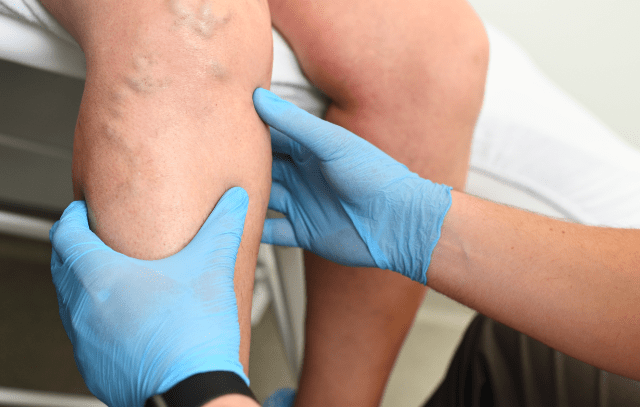How to Deal with Leg Cramps

Leg cramps, also known as muscle cramps or charley horses, are sudden and involuntary contractions of the muscles in the leg. Though harmless themselves, leg cramps can occur spontaneously and cause significant discomfort or pain. While the risks associated with leg cramps are generally minimal, it’s important to address any underlying factors that may be contributing to their occurrence. In this article brought to you by Mountain Spring Podiatry, we share basic information on leg cramps, as well as tips on how to deal with them. If you are looking for a
skilled podiatrist, or
foot doctor, you can call Mountain Spring Podiatry to schedule a convenient appointment.
Why Do Legs Cramp?
Sudden and involuntary contractions of the muscles, also known as leg cramps, can be triggered by a number of factors and they can happen to people of all ages. Still, they are more common among older adults as well as athletes.
Though the exact cause of leg cramps in unclear, there are several factors that can contribute, including but not limited to:
- Muscle Fatigue: After overuse or prolonged muscle exertion.
- Dehydration & Electrolyte Imbalance: Electrolytes are essential for proper muscle function. Not drinking enough water can disrupt the balance of electrolytes in the body.
- Poor Circulation: Poor blood flow can deprive muscles of sufficient oxygen and nutrients.
- Pregnancy: Hormonal changes and increased pressure on leg muscles in pregnant women can contribute to leg cramps.
While leg cramps are usually harmless and resolve on their own, they can be quite painful and disruptive. Fortunately, there are some things you can do to alleviate leg cramps.
What to do About Leg Cramps?
Leg cramps will usually go away on their own, but they can last anywhere between a few seconds to ten whole minutes. If you can’t wait, then you can:
- Gently stretch and massage the affected muscles.
- Apply a warm towel or heating pad to loosen tight muscles.
- Rub the muscle with ice to relieve soreness or pain.
- Take over-the-counter pain relievers to sooth any severe pain.
Still, you should be proactive to prevent or reduce the risk of leg cramps in the first place. Some crucial tips include staying hydrated, maintaining a healthy and balanced diet rich in nutrients, and performing regular exercise. If your leg cramps are frequent, intense, or are accompanied by other concerning symptoms, then it is advised that you see a healthcare professional for evaluation and guidance.
How a Licensed Podiatrist Can Help
A
qualified podiatrist is a healthcare professional who specializes in the diagnosis and treatment of foot and ankle conditions. They can conduct a thorough evaluation of your legs, ankle, and feet to check for contributing factors. They can also assess you for any underlying conditions and provide targeted, tailored treatment. This can involve recommending appropriate shoes or custom orthotics, specific exercises and stretches, or lifestyle adjustments.
If you would like to schedule an appointment with a
reliable podiatrist in the Mountain Spring area, then call Mountain Spring Podiatry to speak with a courteous member of our team.
 Leg cramps, also known as muscle cramps or charley horses, are sudden and involuntary contractions of the muscles in the leg. Though harmless themselves, leg cramps can occur spontaneously and cause significant discomfort or pain. While the risks associated with leg cramps are generally minimal, it’s important to address any underlying factors that may be contributing to their occurrence. In this article brought to you by Mountain Spring Podiatry, we share basic information on leg cramps, as well as tips on how to deal with them. If you are looking for a skilled podiatrist, or foot doctor, you can call Mountain Spring Podiatry to schedule a convenient appointment.
Leg cramps, also known as muscle cramps or charley horses, are sudden and involuntary contractions of the muscles in the leg. Though harmless themselves, leg cramps can occur spontaneously and cause significant discomfort or pain. While the risks associated with leg cramps are generally minimal, it’s important to address any underlying factors that may be contributing to their occurrence. In this article brought to you by Mountain Spring Podiatry, we share basic information on leg cramps, as well as tips on how to deal with them. If you are looking for a skilled podiatrist, or foot doctor, you can call Mountain Spring Podiatry to schedule a convenient appointment.
